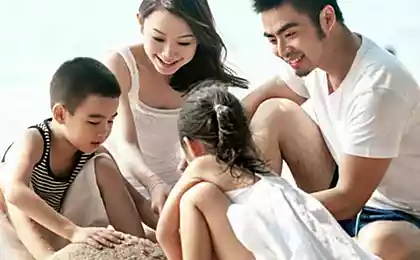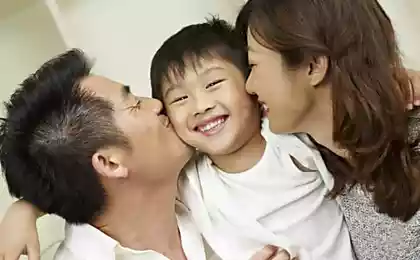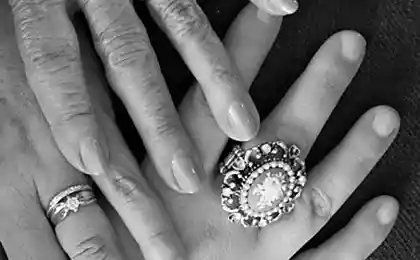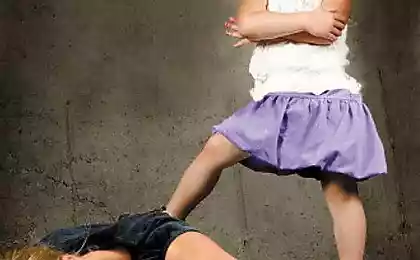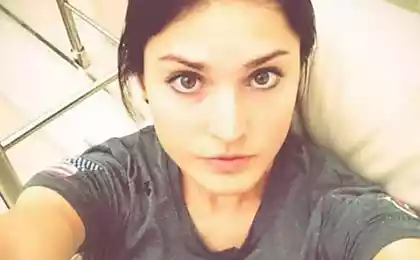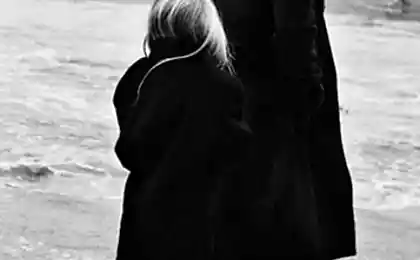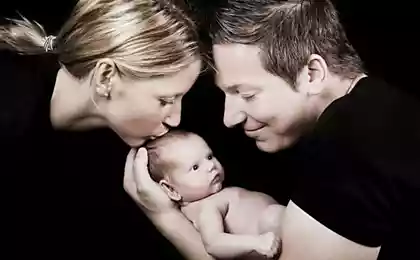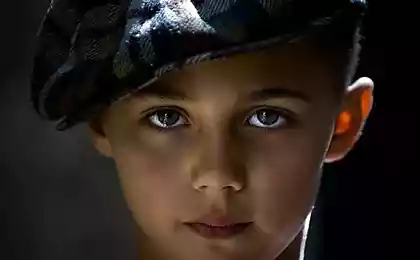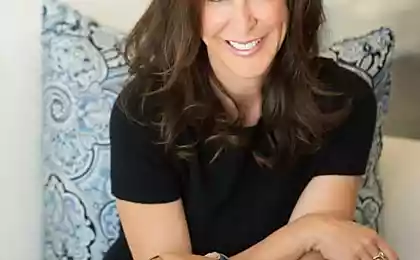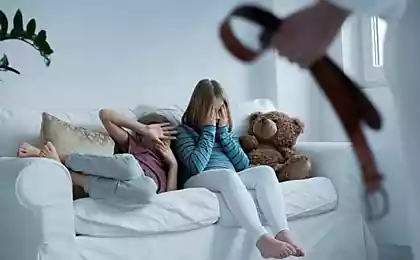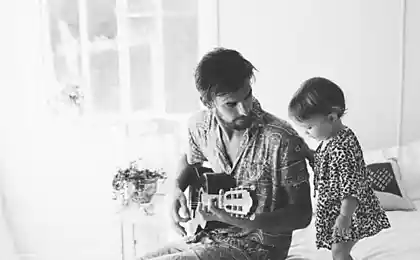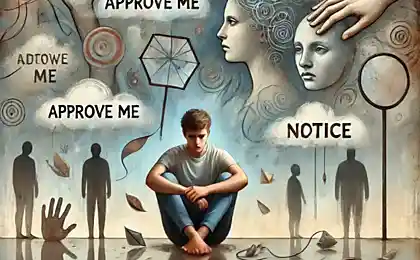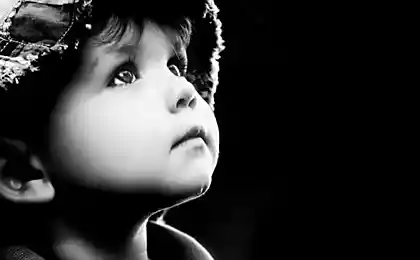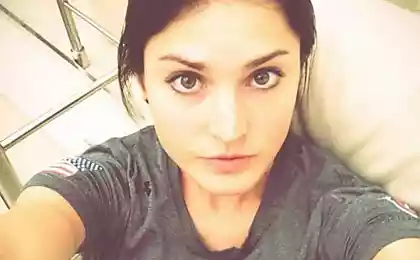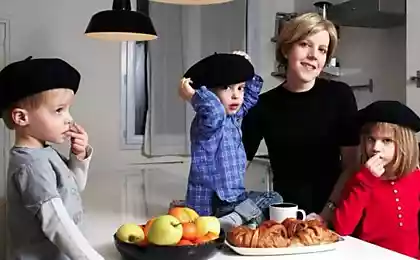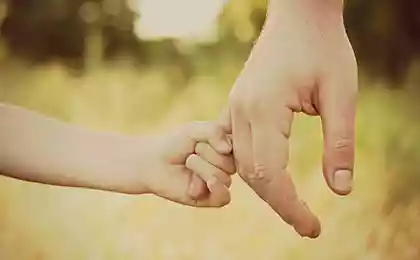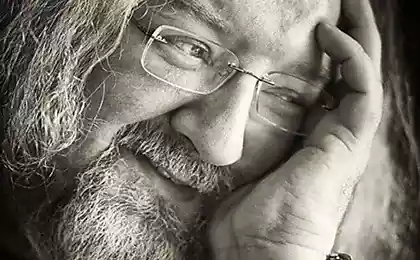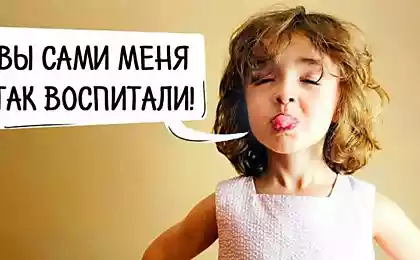215
How the system of sports education of children in France
Many people still remember school physical education lessons with horror. Strict teacher, standards, fear of making mistakes and becoming a laughing stock. Of course, this wasn’t the case for everyone, but we’re sure some people have had unpleasant memories of it. Our system. physical education It is not perfect, I would like it to be more like the European Union.
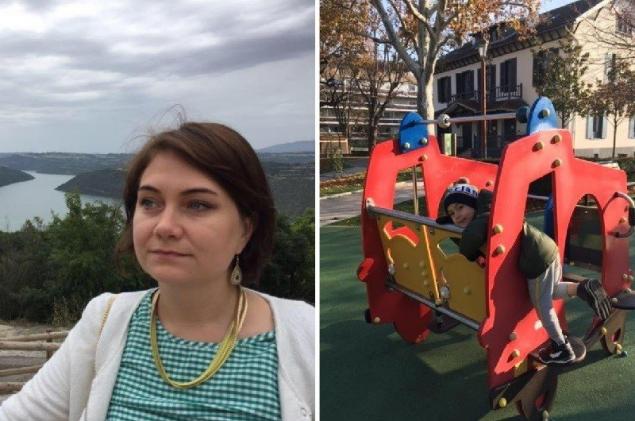
We recently got acquainted with the blog of a young mother Anna Dmitrieva, who is raising children in France. In one of the articles Anna touched on the topic of sports education of children in France, and we really liked her thoughts on this subject. Therefore, the editorial board "Site" Anna Dmitrieva shares with you an article about the French approach to sports education of children.
Sports education “On the first or second ra-a-count!” – in physical education class I always threw in a cold sweat. “Calculation is over!” – a little audible I finished the class roll call, standing at the end of the battle line. To say that I was unsportsmanlike is to say nothing. “A little chamomile girl” was what my first physical education teacher called me. In fact, it was during her lessons that I learned firmly and firmly for myself the attitude: “Sport is not mine.”
I remember my first physical education class at school. A teacher with a pronounced male physique goes to the classroom for the children and with a loud battle cry “Follow me!” leads us into the hall. It wasn't fun at all, it was scary. It is terrible not to hear the command, it is terrible not to be able to perform the movement. If you’re wrong, you’ll hear the teacher scream or laugh. It was shameful to be wrong.
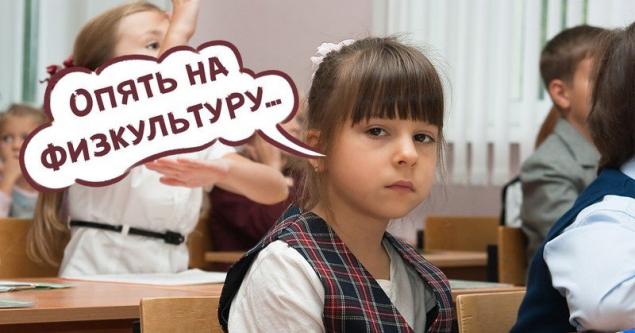
When I was seven, I learned about sports standards and that if you don't fit in, you get a bad grade. Whether from fear or from innate natural awkwardness, but I was not good at jumping, throwing a ball into the ring, tumbling. On the lines at the end of the quarter, my last name was never called among the excellent and good. Among all the other subjects on which I had almost all fives, there was a frail, strained three in physical education.
As the years passed, I successfully graduated from high school and college, but I still said my firm “no” to sports. Already married, thanks to my husband, I began to understand that, it turns out, you can enjoy swimming, running, cycling. Like a schoolgirl, she asked him, “Teach me.”
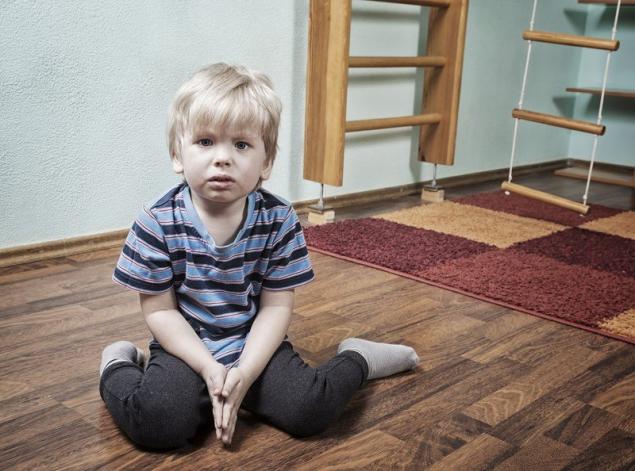
When I had children, I promised myself that I would do everything to ensure that they did not have such complexes as me. After all, it is so easy to break the desire to play sports in a child, instilling in him an unreasonable fear. Whether my children were lucky or unlucky, it is difficult for me to judge this, but they were destined to spend their childhood in France, where my husband and I once decided to move.
The French are a very sporty nation. Sport is an integral part of their lives. The most interesting thing is that they really enjoy it, whether it’s running alone, playing tennis with a colleague at lunchtime, or going to the park on scooters. But this love for sports goes to them from early childhood.
My daughter was just over three years old when I, as an accompanying parent, went with her kindergarten group to sports camps. In a large sports hall, many different structures were installed: a climbing wall, a basket for throwing a ball, a puck stick, bicycles and much more.
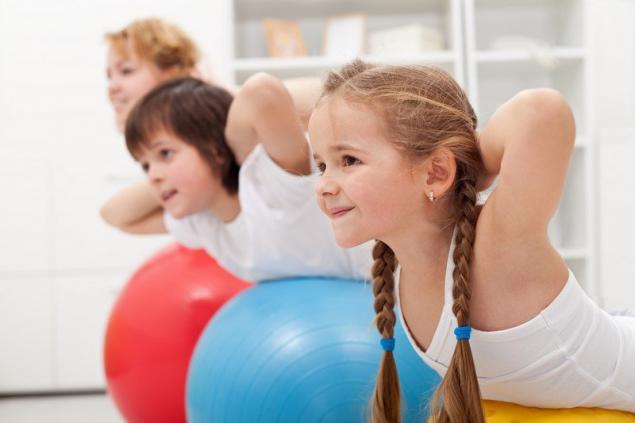
The children were divided into teams, and each of them in turn tried to do different exercises. Yeah, I did. Some did, some did not. Interestingly, teachers used words such as “feel” or “not yet feel” when assessing children’s skills.
And if the child has not yet been able to “feel”, it is not afraid. “It will come with time, because he will have another chance to try this exercise many times,” the director explained to me.
From the age of four, I enrolled my daughter in the swimming section. Parents are warned in advance that classes in the pool for the youngest do not initially aim to teach the child to swim. The main purpose of such classes is to develop a habit of the child to be in the water environment, so that there is no fear of learning to swim.
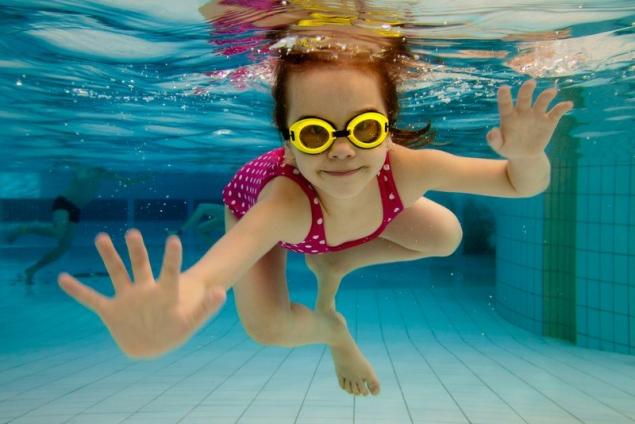
The teachers are in the pool with the children. In playful form, children gradually learn to stay on the water, hold their breath, and get toys from the bottom of the pool.
Later, my youngest son, in his early two years, began to attend general athletic development, an activity whose goal is to gradually reveal the child’s abilities to a particular sport. Regular gym, standard equipment - nothing special, at first glance.
Class takes place with mom or dad, or grandpa, or big sister - you can come with anyone. There are clear rules, but there is a fun atmosphere. Invisibly, my son felt like throwing a ball into a basketball ring, wielding a hockey stick, tumbling, walking on a log...
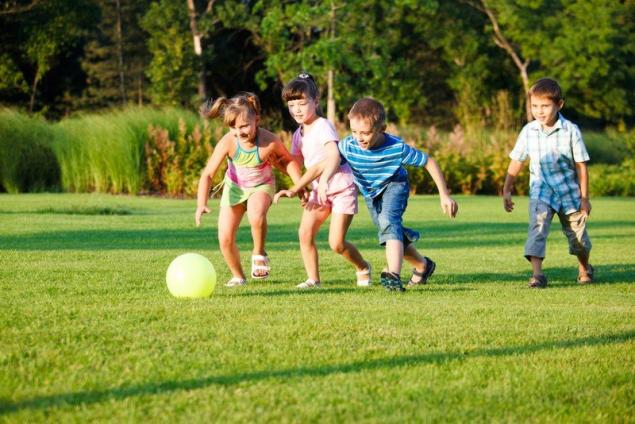
And watching how teachers calmly and unobtrusively help children develop further sports skills in them, I understood the principles on which sports education should be built. Education that will help in the future sport and strive for high results. The kind of education I didn't have in my childhood.
Those attitudes that were once lacking for me personally, so as not to deprive myself of such an important and interesting part of life as sports.
I will never be a master of sports, a champion of competitions, and I will not demand that of my children in the future. But without movement, I can no longer imagine my life. And I see it as my task to instill and preserve the love of movement in my children, because it is so easy to break: a rude word, an accidental comparison with someone else. “Physical hello!” – I will tell myself and my children, what I wish you, dear readers.
We liked this approach because it is true in everything. It would be good if our schools adopted at least some elements of this system. Then children would happily go to physical education classes, and there would be no childhood injuries associated with it. We hope for the best!
Anna has a lot of interesting articles about raising children. We recently shared her article with you about why a child should be praised more often. She also wrote about whether to teach a child to share toys with other children. Very interesting!
What do you think about this system? Tell us in the comments!

We recently got acquainted with the blog of a young mother Anna Dmitrieva, who is raising children in France. In one of the articles Anna touched on the topic of sports education of children in France, and we really liked her thoughts on this subject. Therefore, the editorial board "Site" Anna Dmitrieva shares with you an article about the French approach to sports education of children.
Sports education “On the first or second ra-a-count!” – in physical education class I always threw in a cold sweat. “Calculation is over!” – a little audible I finished the class roll call, standing at the end of the battle line. To say that I was unsportsmanlike is to say nothing. “A little chamomile girl” was what my first physical education teacher called me. In fact, it was during her lessons that I learned firmly and firmly for myself the attitude: “Sport is not mine.”
I remember my first physical education class at school. A teacher with a pronounced male physique goes to the classroom for the children and with a loud battle cry “Follow me!” leads us into the hall. It wasn't fun at all, it was scary. It is terrible not to hear the command, it is terrible not to be able to perform the movement. If you’re wrong, you’ll hear the teacher scream or laugh. It was shameful to be wrong.

When I was seven, I learned about sports standards and that if you don't fit in, you get a bad grade. Whether from fear or from innate natural awkwardness, but I was not good at jumping, throwing a ball into the ring, tumbling. On the lines at the end of the quarter, my last name was never called among the excellent and good. Among all the other subjects on which I had almost all fives, there was a frail, strained three in physical education.
As the years passed, I successfully graduated from high school and college, but I still said my firm “no” to sports. Already married, thanks to my husband, I began to understand that, it turns out, you can enjoy swimming, running, cycling. Like a schoolgirl, she asked him, “Teach me.”

When I had children, I promised myself that I would do everything to ensure that they did not have such complexes as me. After all, it is so easy to break the desire to play sports in a child, instilling in him an unreasonable fear. Whether my children were lucky or unlucky, it is difficult for me to judge this, but they were destined to spend their childhood in France, where my husband and I once decided to move.
The French are a very sporty nation. Sport is an integral part of their lives. The most interesting thing is that they really enjoy it, whether it’s running alone, playing tennis with a colleague at lunchtime, or going to the park on scooters. But this love for sports goes to them from early childhood.
My daughter was just over three years old when I, as an accompanying parent, went with her kindergarten group to sports camps. In a large sports hall, many different structures were installed: a climbing wall, a basket for throwing a ball, a puck stick, bicycles and much more.

The children were divided into teams, and each of them in turn tried to do different exercises. Yeah, I did. Some did, some did not. Interestingly, teachers used words such as “feel” or “not yet feel” when assessing children’s skills.
And if the child has not yet been able to “feel”, it is not afraid. “It will come with time, because he will have another chance to try this exercise many times,” the director explained to me.
From the age of four, I enrolled my daughter in the swimming section. Parents are warned in advance that classes in the pool for the youngest do not initially aim to teach the child to swim. The main purpose of such classes is to develop a habit of the child to be in the water environment, so that there is no fear of learning to swim.

The teachers are in the pool with the children. In playful form, children gradually learn to stay on the water, hold their breath, and get toys from the bottom of the pool.
Later, my youngest son, in his early two years, began to attend general athletic development, an activity whose goal is to gradually reveal the child’s abilities to a particular sport. Regular gym, standard equipment - nothing special, at first glance.
Class takes place with mom or dad, or grandpa, or big sister - you can come with anyone. There are clear rules, but there is a fun atmosphere. Invisibly, my son felt like throwing a ball into a basketball ring, wielding a hockey stick, tumbling, walking on a log...

And watching how teachers calmly and unobtrusively help children develop further sports skills in them, I understood the principles on which sports education should be built. Education that will help in the future sport and strive for high results. The kind of education I didn't have in my childhood.
Those attitudes that were once lacking for me personally, so as not to deprive myself of such an important and interesting part of life as sports.
- Everyone has different abilities. Every body has different limits of possibilities. But these boundaries can be gradually expanded.
- You don’t have to force your child to do an exercise if he doesn’t, much less compare him to someone else. One immediately felt how to use the stick, the other will feel it a little later. There are no non-sportsmen! Someone just needs less time to master a particular skill, and someone more.
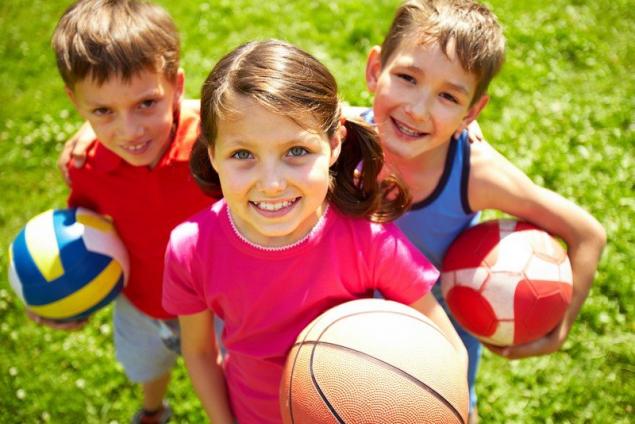
- If a child is afraid to jump from a tower or walk on a log, give him a hand. There should be no fear of any movement. Time will pass, and he will let go of your hand and make the necessary movement independently, confidently and without fear.
- Sport, of course, is beneficial. Like water, food, and sleep, everyone needs it. But first of all, it should bring pleasure. For children, sport is primarily a fun game. For adults - knowledge of the physical capabilities of your body, psychological unloading.
- One person doesn’t have to do everything at once. Sports classes in schools and sections exist to identify the predisposition of the child to a particular sport. “It’s normal for a child to do better and worse,” the children’s sports instructor explains to me.
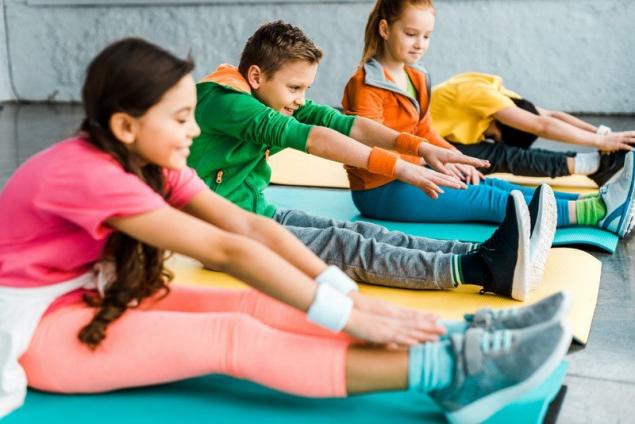
- In the pool, the gym, on the football field, of course, have its own rules, relating primarily to safety. But that doesn’t mean that no one is breaking these rules. And the task of the instructor is clear, without screaming, without scaring the child to explain what can be done and what can not be done.
- Taking your child to training does not mean realizing your parental ambitions in order to receive your offspring in the future Olympic gold. This is necessary in order to instill in the child a love of movement, develop a sports habit, let him understand that physical activity is, first of all, a necessary pleasure.
- “Sport is like food,” my son’s coach told me. - The most important thing is to try. You may not like a dish the first time, and you won't eat it while you eat it. But the taste habits of a person tend to change over time, and you will try this dish again. Who knows, maybe you'll try it so hard you won't be able to get away from it.
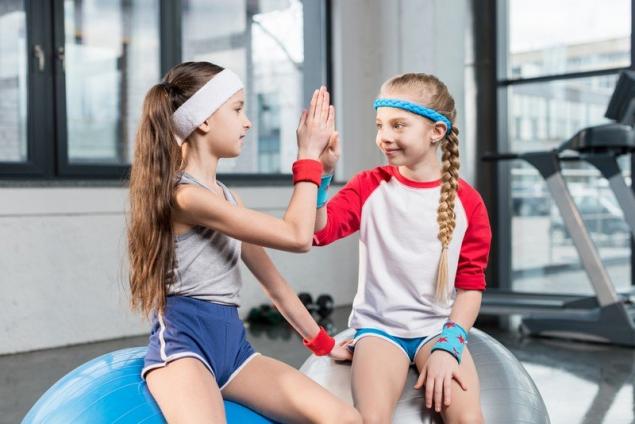
I will never be a master of sports, a champion of competitions, and I will not demand that of my children in the future. But without movement, I can no longer imagine my life. And I see it as my task to instill and preserve the love of movement in my children, because it is so easy to break: a rude word, an accidental comparison with someone else. “Physical hello!” – I will tell myself and my children, what I wish you, dear readers.
We liked this approach because it is true in everything. It would be good if our schools adopted at least some elements of this system. Then children would happily go to physical education classes, and there would be no childhood injuries associated with it. We hope for the best!
Anna has a lot of interesting articles about raising children. We recently shared her article with you about why a child should be praised more often. She also wrote about whether to teach a child to share toys with other children. Very interesting!
What do you think about this system? Tell us in the comments!




